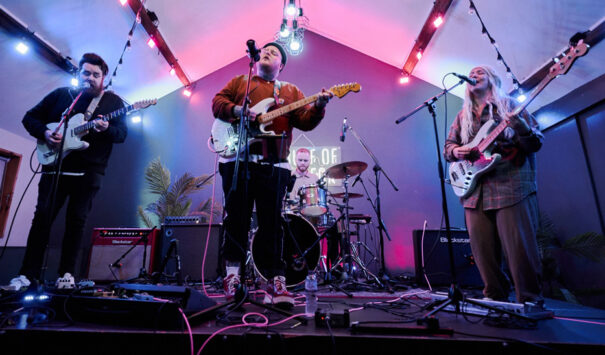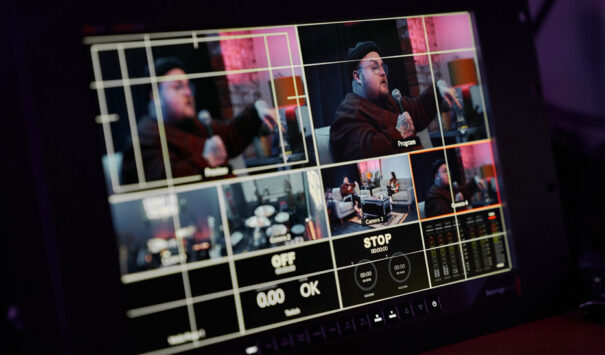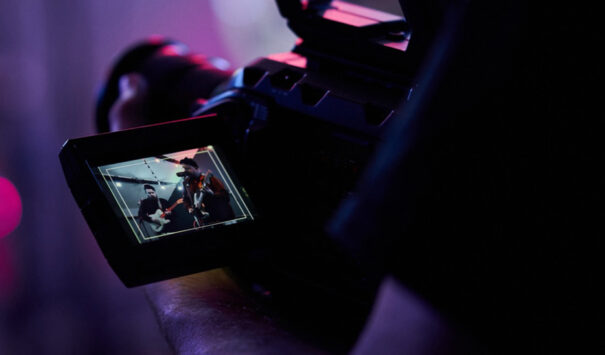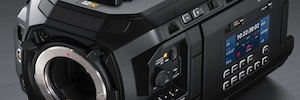Scruff of the Neck TV broadcast live on twitch with Blackmagic Design
Blackmagic Design’s ATEM Mini Extreme and Blackmagic Pocket Cinema Camera 6K have enabled Scruff of the Neck to stream concerts via Twitch.
Scruff of the Neck TV (associated with the eponymous independent record label) is a UK platform that provides the opportunity to discover new music via Twitch. Each three-hour live show is hosted by Abbie McCarthy (BBC Radio) and Jack Wood (Radio X), and includes concerts and interviews with various bands.
To date, more than 90 hours of content has been produced and viewed four and a half million times. Artists featured on the channel include Yonaka, The Slow Readers Club, Bad Boy Chiller Crew, Lottery Winners and Larkins.
Easy workflow
Chris Brearley, director of live production at Scruff on the Neck, has from the outset planned a workflow based on “versatility and ease of use”. As he says, “We’re working with multiple camera feeds, four to six per show, plus VT content from additional sources.”
To achieve this, Brearley and his team rely on a number of Blackmagic Design cameras, including the Pocket Cinema Camera 6K, URSA Mini Pro 4.6K G2 and Micro Studio Camera 4K. On the other hand, Micro Converter units are used to connect the SDI cameras to the ATEM Mini Extreme mixer. Finally, the images transmitted by this are displayed on a SmartView 4K monitor.
The result, according to Brearley, lives up to expectations: “We create high value production pieces, aiming to get as close to a real live concert which viewers can feel part of. We have two roaming cameras to get us in amongst the performance and add movement to the broadcast, and rely on a series of fixed cameras positioned around the set to give the audience even more vantage points.”
Post-Covid-19 follow-up
For Scruff of the Neck, the biggest challenge has been to be able to carry out the transmissions in compliance with Covid-19 regulations. For example, it was necessary to reduce the number of production crew members to limit the number of people present in the available space. “Thankfully, the functionality and capability of the hardware we’re using has made it easier than we anticipated,” says Brearley. “We’ve been able to deliver our weekly broadcasts safely under government guidelines, without needing to compromise on quality.”
Although the initiative came about as a result of the pandemic, Brearley believes the initiative will continue to have a place in the future: “We want to evolve and give the show purpose beyond the return of real live shows by taking the format into venues. There’s a lot of untapped potential in the ATEM Mini Extreme ISO, which will allow us to continue to grow and evolve.”
¿Te gustó este artículo?
Suscríbete a nuestro RSS feed y no te perderás nada.


















